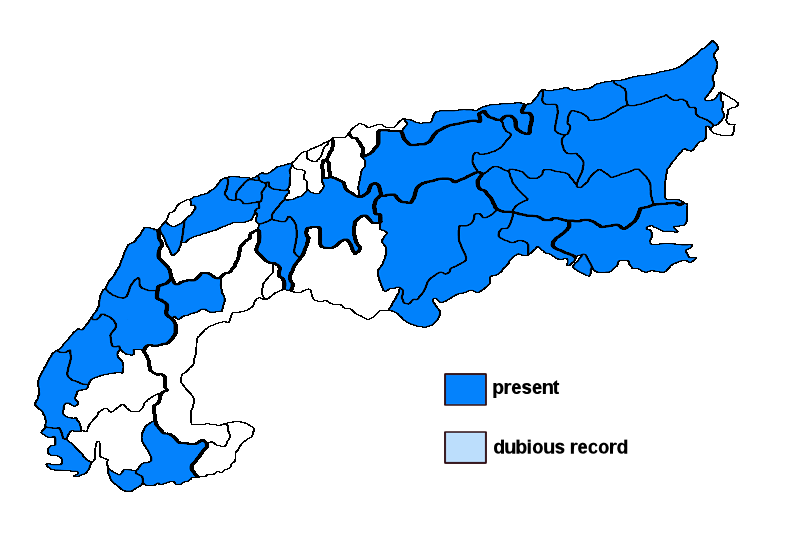Polyblastia sepulta A. Massal.
Syn.: Amphoroblastia calcivora (Nyl.) Servít, Amphoroblastia pertusula (Nyl.) Servít, Amphoroblastia sepulta (A. Massal.) Servít, Polyblastia calcivora (Nyl.) Croz., Polyblastia pertusula (Nyl.) Zschacke, Thelidium calcivorum (Nyl.) Hulting, Thelidium epipolaeum Arnold non A. Massal., Verrucaria calcivora Nyl., Verrucaria pertusula Nyl., Verrucaria sepulta (A. Massal.) Wedd.; incl. Amphoroblastia bavarica (Dalla Torre & Sarnth.) Servìt, Polyblastia bavarica (Dalla Torre & Sarnh.) Zschacke, Thelidium bavaricum Dalla Torre & Sarnth.
Lichenised.
Substrate: calciferous rocks
Altitudinal range: from the submediterranean/colline belt (potential vegetation: mixed deciduous forests dominated by Quercus and Carpinus) to the alpine belt (potential vegetation: treeless Alpine grasslands and tundras, to the lower limit of perennial snow and the equilibrium line of glaciers)
Note: a species resembling P. dominans, but with smaller, narrowly ellipsoid ascospores with usually 5 transversal septa and occasionally a single incomplete longitudinal septum; on hard calciferous rocks in shaded and humid situations, often on pebbles, most frequent above treeline; widespread throughout the Alps. The whole complex - see synonyms - is in need of revision.
Austria: Tirol; Salzburg; Kärnten; Steiermark; Oberösterreich; Niederösterreich (incl. Wien); Germany: Oberbayern; Switzerland: Bern; Graubünden; Luzern; Schwyz; Ticino; Uri; Unterwalden; Vaud; France: Alpes-Maritimes; Drôme; Isère; Savoie; Haute-Savoie; Vaucluse; Var; Italy: Friuli; Veneto; Trentino Alto Adige; Valle d'Aosta; Slovenia: Alpine and Pre-Alpine Slovenia; Trnovsky Gozd;





